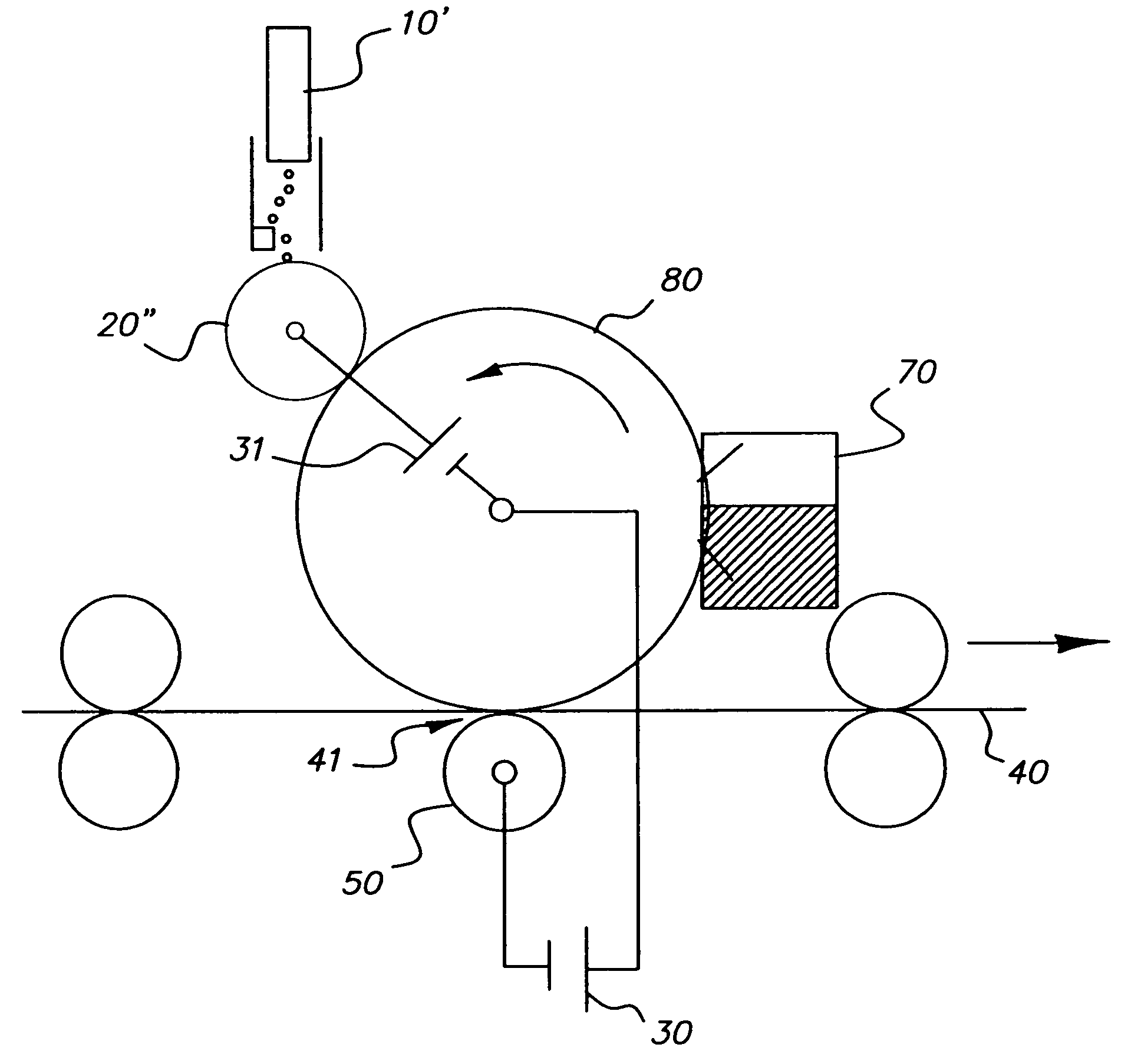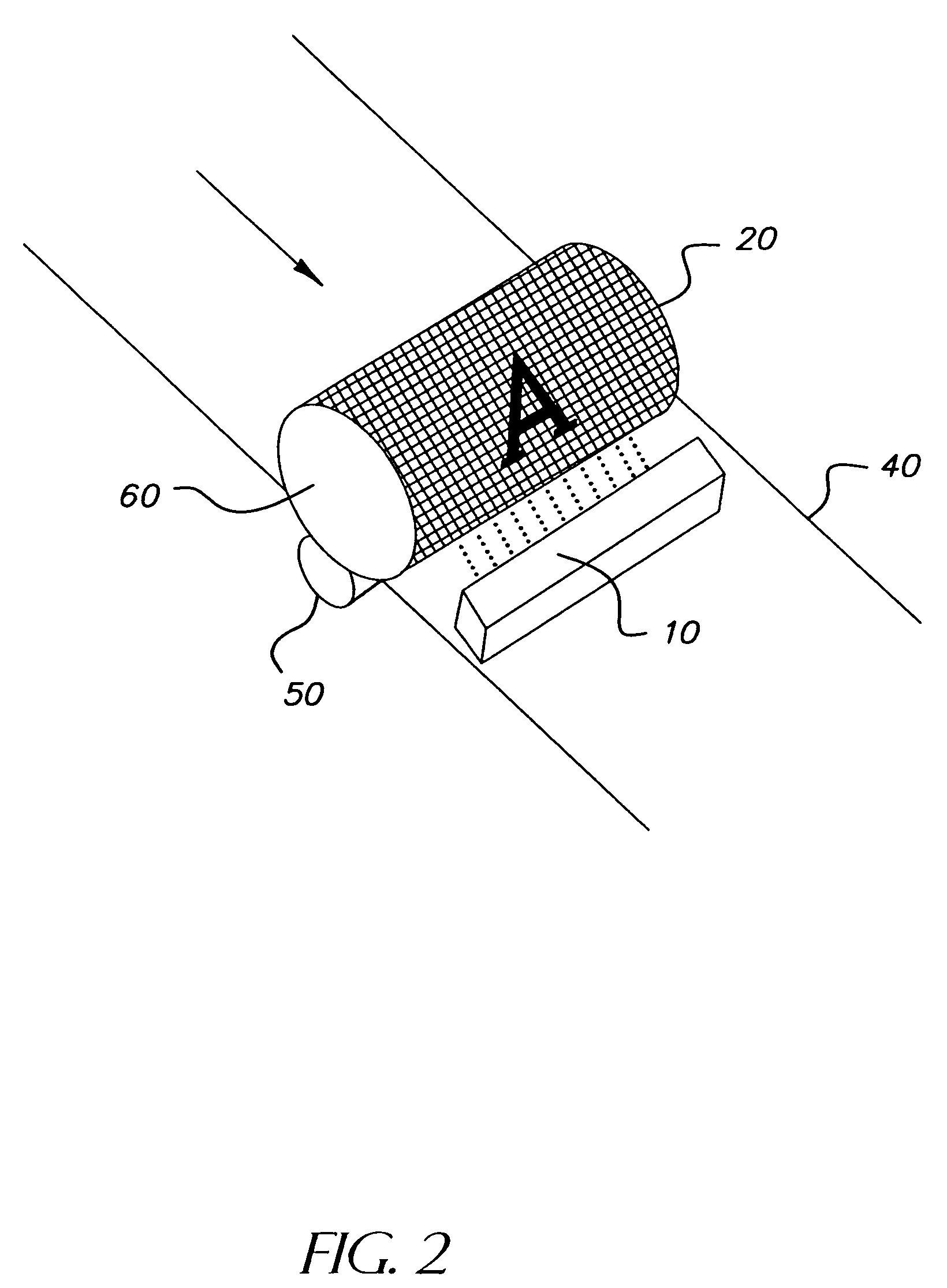Method and apparatus for ink jet printing on patterned substrate
a technology of ink jet printing and patterned substrate, applied in the field of image printing, can solve the problems of limited process width, high print cost, low process speed, etc., and achieve the effect of easy cleaning and/or evaporation and high speed
- Summary
- Abstract
- Description
- Claims
- Application Information
AI Technical Summary
Benefits of technology
Problems solved by technology
Method used
Image
Examples
Embodiment Construction
[0015]The subject invention will now be more particularly described with reference to the accompanying drawings. In the mode of operation according to the invention, the aforementioned ink is jetted from an ink jet printhead 10 into just those cells of a patterned uniform series of equal-sized cells (see FIG. 2) on a substrate 20 (described more fully below) for a primary imaging member 60 that defines the image to be printed. In one embodiment of this invention, the image is then transferred to the receiver 40 (e.g., paper) by pressing the receiver into contact with the image-bearing primary imaging member 60 and applying an electric field that urges the marking particles in the ink in the cells of the patterned substrate 20 towards the receiver (see FIG. 1). In this manner, most, if not virtually all, of the marking particles will be transferred to the receiver, leaving behind clear ink solvent. Thus, most of the solvent never soaks into the receiver and the concentrated ink, resu...
PUM
| Property | Measurement | Unit |
|---|---|---|
| Young's modulus | aaaaa | aaaaa |
| voltage | aaaaa | aaaaa |
| voltage | aaaaa | aaaaa |
Abstract
Description
Claims
Application Information
 Login to View More
Login to View More - R&D
- Intellectual Property
- Life Sciences
- Materials
- Tech Scout
- Unparalleled Data Quality
- Higher Quality Content
- 60% Fewer Hallucinations
Browse by: Latest US Patents, China's latest patents, Technical Efficacy Thesaurus, Application Domain, Technology Topic, Popular Technical Reports.
© 2025 PatSnap. All rights reserved.Legal|Privacy policy|Modern Slavery Act Transparency Statement|Sitemap|About US| Contact US: help@patsnap.com



